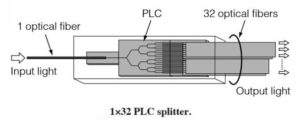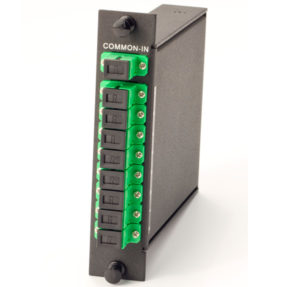Product Show: PLC Fiber Optical Splitter
The optical splitter is part of a passive component (also called a passive component) in the optical transmission process. Like the coaxial cable transmission system, the optical network system also needs to couple, branch and distribute the optical signal, which requires light. It is realized by a splitter, which is one of the important passive components in the fiber link. It is a fiber tandem device with multiple inputs and multiple outputs (the one in the CATV system is generally an input). The process plays an important role in the planning and distribution of fiber optic networks. The choice of optical splitters is particularly important.
The planar waveguide type optical splitter (PLC Splitter) is an integrated waveguide optical power distribution device based on a quartz substrate, which is suitable for connecting central office and terminal equipment in passive optical networks (EPON, BPON, GPON, etc.) and FTTx networks, realizing the branching of the optical signal.

Types of PLC Optical Splitter
PLC optical splitters have a wide variety of split ratios, the most common being 1:8, 1:16, 1:32, 1:64, 2:8, 2:16, 2:32 and 2:64. According to different packaging methods, PLC optical splitters can be divided into bare fiber type, miniature, with branch type, ABS box type, tray type, rack type and so on.
Bare fiber type: The bare fiber type PLC optical splitter is directly led by optical fiber (usually using ribbon fiber), and the two ends are not formed. It is mainly suitable for occasions where it is not frequently disassembled, and is installed in various types by welding or cold connection. Inside the pigtail box or in the test instrument.

Blockless type: Blockless PLC refers to a small optical splitter assembly that uses a steel tube package and uses a 0.9mm loose tube for fiber delivery. It is mainly suitable for installation space is relatively tight, no need to weld or cold connection, such as fiber optic cable connector box, fiber optic fiber splitting box, can also be installed in the insert type and rack type optical splitter combination box.

Splitter type: The splitter type PLC optical splitter is designed for flexible management of fiber optic cables in confined spaces with 0.9 mm fiber for both the input and output. The output of the branch-type PLC optical splitter has a splitter and multiple branch cables (as shown in the figure below), usually installed in various types of optical equipment and various types of optical test instruments.

ABS box type: It is packaged in ABS plastic box, and the port is made of pigtail. It is mainly used in the rack, and when the fiber branches into the household, it is installed in the cable transfer box. The main function is to complete the fiber-optic cable entering the cell or building. It has the functions of fixing, stripping, welding, jumper, and splitting of the fiber.

Rackmount type: The rackmount PLC is housed in a metal case and can be mounted in a 19″ 1U cabinet.

MPO MTP Type: This MPO Passive Optical Splitter Module designed as a plug-play solution for FTTX application. The modules are designed for use in FTTX networks and available in multiple configurations and packaging types. It features small size, high reliability, wide operating wavelength range and good channel-to-channel uniformity, and the convenience of MPO connections for faster and cable management. All products meet GR-1209-CORE and GR-1221-CORE requirements.

Conclusion
With the wide application of FTTH networks, in order to serve more users, the demand for the number of optical splitters of optical splitters is getting higher and higher. Therefore, the PLC optical splitter has become a popular optical splitter in FTTH applications because of its many ways of splitting and even splitting.


